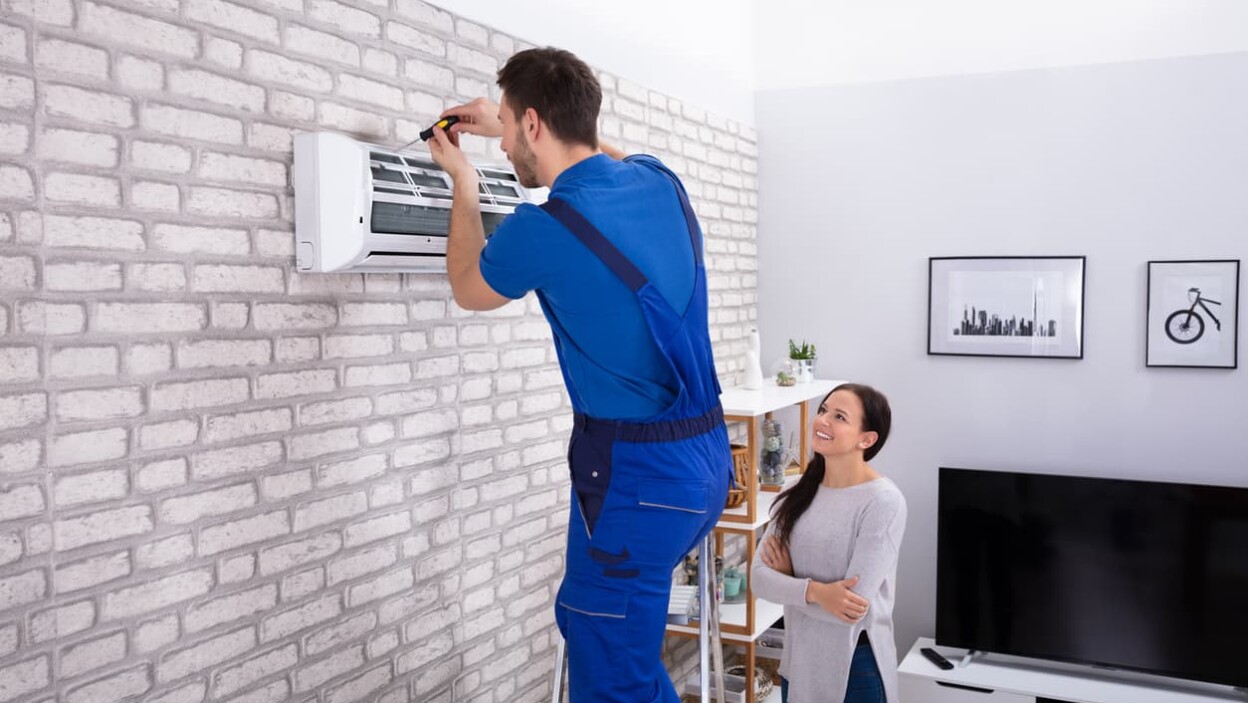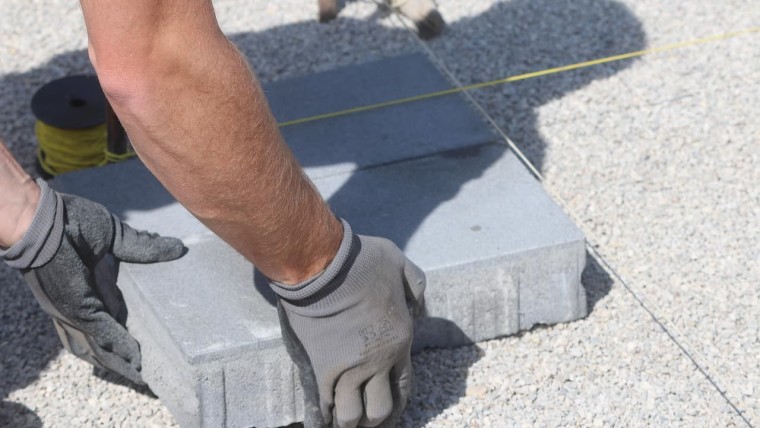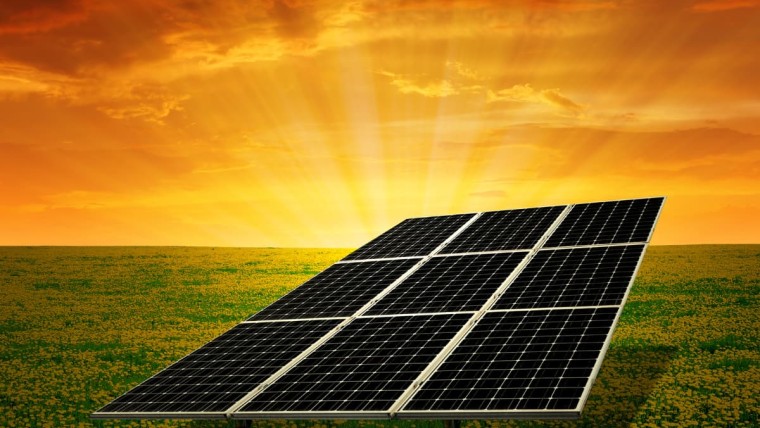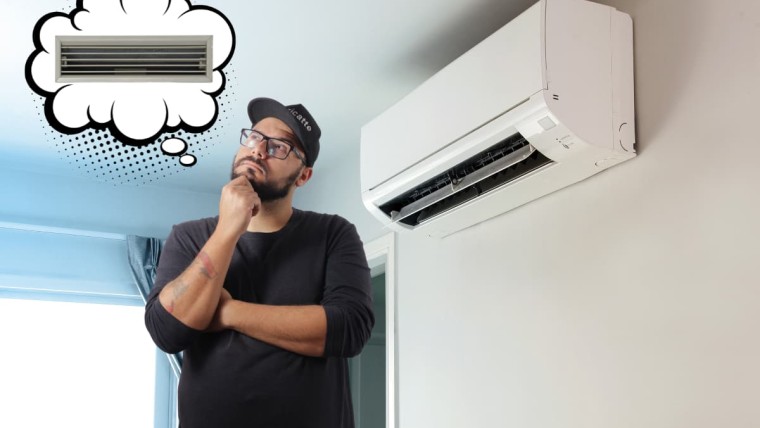If you are looking for a heat pump to provide your heating, you may be thinking of killing two birds with one stone and using it to cool one or more rooms in your home.
An air-to-water heat pump cannot provide air conditioning in the primary sense of the term. Indeed, it can cool the water in your network thanks to a 4-way valve that ensures its reversibility, but the dew point principle limits the temperature that can be reached.
Later on, we will clarify this notion of dew point, and then we will see which type of heat pump to use to really air-condition, which models to choose, and if heating with this type of heat pump is efficient.
The air-water heat pump cools but does not air-condition : detail
Air conditioning differs from cooling by the temperature drop obtained compared to the original temperature of the room. Indeed, air conditioning allows a temperature difference of about 7°C, while with cooling you stay on 3 or 4°C maximum.
A heat pump is capable of producing heating thanks to its refrigeration circuit. In some cases, the refrigeration circuit is reversible, thanks to the installation of a 4-way reversal valve, and the heat pump is thus able to cool the water in the network.
However, as the water from the network passes through the pipes of your radiators or underfloor heating, it must be prevented from falling below a certain temperature called the dew point temperature. Indeed, if the temperature goes below this point, there is a risk of condensation on your radiators or floor heating. This requires the installation of a temperature control that adapts to the conditions and follows the evolution of the dew point.
In other words, it may produce water drops on your radiators or your floor, which is annoying and does not respect the principles of hygiene in the home.
Therefore, if you decide to reverse the cycle with a 4-way valve, you must also limit the temperature by keeping it above the dew point.
If it is summer, there is usually quite a bit of humidity in the air. Let's take the example of a hot day where it is 28°C with a humidity level of 45%. Then the dew point is 15°C. You should not pass water colder than that. Therefore we will not be able to air-condition but just cool down a few degrees.
So how do you air condition with a heat pump?
To really air-condition with a heat pump, we will have to get rid of water as a medium for transporting cold, and opt for air.
We will therefore opt for an air-to-air heat pump that will be able to blow fairly cold air without the risk of condensation on a surface. The air is pulsed in the room in an intelligent way to avoid unpleasant draughts, and it mixes with the hot air to cool it down. This is how we can talk about air conditioning, because we can pulse really cold air. Even if we will limit ourselves in order not to create discomfort.
Depending on the required set point, the supply temperature of the air-to-air heat pump or air conditioner may be below 10°C. The closer the ambient temperature gets to your set point, the higher the supply temperature rises, finally balancing with the ambient air and stopping when the set point is reached.
Which air-to-air heat pump models should I choose to air-condition a room or a space?
Many brands offer wall-mounted air conditioners, but the Japanese are at the head of the pack. Indeed, Mitsubishi, Daikin or other Toshiba dominate the air conditioning market in France. You will see them everywhere, especially in the South.
3 models of air-to-air heat pumps or air conditioners to consider
Mitsubishi Wall Mount Compact+ MSZ-FT
It is a reversible air conditioner composed of an outdoor unit and an indoor unit. This model exists in 3 sizes 25 / 35 and 50 which provide respectively cooling powers of 2.5 / 3.5 and 5kW. Very quiet, this model also provides heating in winter with powers between 3.2 and 5kW depending on the size of the unit. The SCOP is between 4.3 and 4.6. These models are eligible for the CEE bonus
Photo of the indoor unit
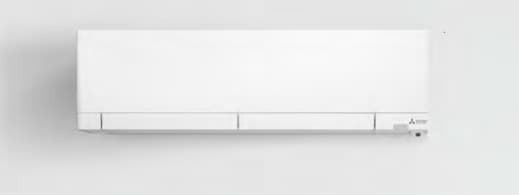
Diagram of the outdoor unit (to be placed in front of the building, hung on the wall or placed on the ground)
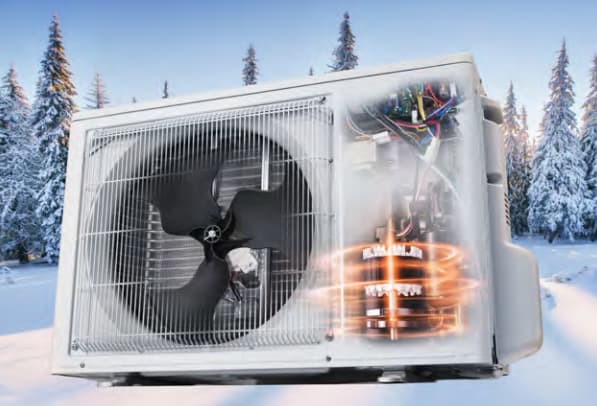
Daikin Emura 3
Daikin is a very famous Japanese brand that offers many air-to-air heat pump or air conditioning solutions. We have chosen the most stylish of them: the Daikin Emura 3.
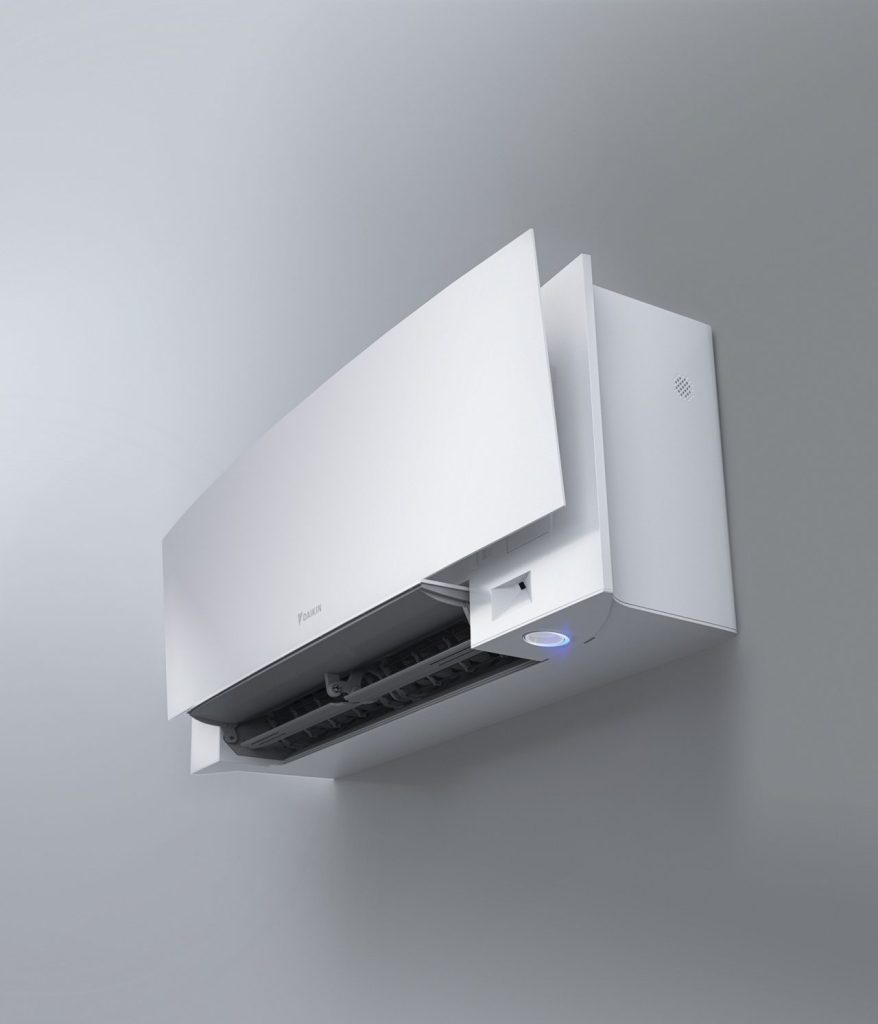
It is available in 3 colors: white, silver, and matte black to fit any interior.
The cooling power ranges from 2 to 5kW at +35°C for an EER (= cooling capacity) between 3.7 and 4.7. In heating, this air-to-air heat pump also works and gives back between 2.5 and 5.8kW of power at +7°C outside.
Other advantages of this model, in addition to its nice design, it is very quiet thanks to a fan of the interior unit which optimizes the air circulation and produces only 19dBA of sound level... for the 3 least powerful models and from 21 to 24dBA for the two biggest models FTXJ42 and FTXJ50 which develop 4.2 and 5kW of cold power.
Toshiba Yukai
The Japanese brand Toshiba produces the Yukai, which is an air-to-air heat pump that is also very quiet, both indoors (19dBA of sound pressure at a distance of 1m from the unit, for the smallest models) and outdoors (42dBA of sound pressure at 1m)
The Toshiba Yukai develops between 1.5 and 6.5 kW of cold power depending on the model. The EER shows up to 4.17 for the smallest models, and 2.89 for the biggest models (6.5KW cold).
In heating, the Yukai gives from 2 to 7kW with COP between 3.3 and 4.2 at +7°C. The SCOP in heating mode is always around 4.5.
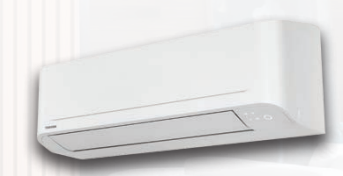
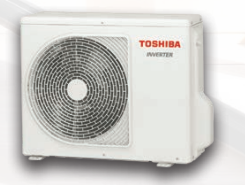
See the technical and presentation sheets for these 3 models of air-to-air heat pumps :
Can we heat with an air-to-air heat pump?
An air-to-air heat pump can of course heat, if its cycle is reversible. It can operate in heat pump mode or in air conditioning mode.
So the real question is: Is it advisable to heat with an air-to-air heat pump? What are the advantages or disadvantages compared to an air-to-water heat pump?
Air, like water, is an energy transport medium. But its thermal mass capacity of 1005 J K-1 kg-1 is more than 4 times lower than that of water which is 4185 J K-1 kg-1. This makes it a much less efficient way to store and transport heat than water.
For these physical reasons, it is often preferable to use an air-water model to provide heating.
Moreover, heating a room with air can generate more discomfort than with water. Indeed, the circulation of air in the room, if poorly controlled, can cause annoying draughts. And since buildings are subject to all kinds of air leaks and other thermal bridges in their thermal envelope, the loss is faster.
The water is distributed through pipes to radiators or underfloor heating. The disadvantage is that it creates the need for regular de-silting of the network, which becomes clogged. But the advantage is that it transports more heat per unit of mass, and that it diffuses in a more pleasant way, especially via the floor.
It should be noted, however, that a hydraulic heat distribution system is much more expensive than an air-source system. Indeed, the air-to-air heat pump does not require any particular installation to distribute the heat, whereas the air-to-water heat pump requires either radiators which are often quite expensive if you want quality, or underfloor heating which requires quite a lot of work: purchase of equipment, pipes, feeders, etc... pouring of concrete slab.
Generally for applications where you are not present continuously, i.e. office buildings or other sports halls, you can opt for air-to-air heat pumps because their cost is lower, comfort is assured, and when you leave you can turn them off. The heat pump will even have the advantage of being able to air-condition, which is a superb luxury and ensures very good working or exercise conditions for a few hours during the day.
But if you need to heat a building in which you live continuously, such as your villa, in which your small family resides all year round. Then it will be better to opt for an air-water heat pump that will ensure the best quality heating, and a perfect comfort if it is well dimensioned and installed.
If you want examples of air water heat pump models, you can browse our top 20 air water heat pumps.
Read also about the differences between air conditioning and water heating:
What are the differences between heat pump and reversible air conditioning
Some reasons not to choose a heat pump for heating

Julien G.
Juliena mechanical engineering graduate and specialist in climate engineering since 2009, has become a writer specializing in renewable energies, with expertise in heat pumps and photovoltaic solar panels for individual housing.
See all articles by this author
